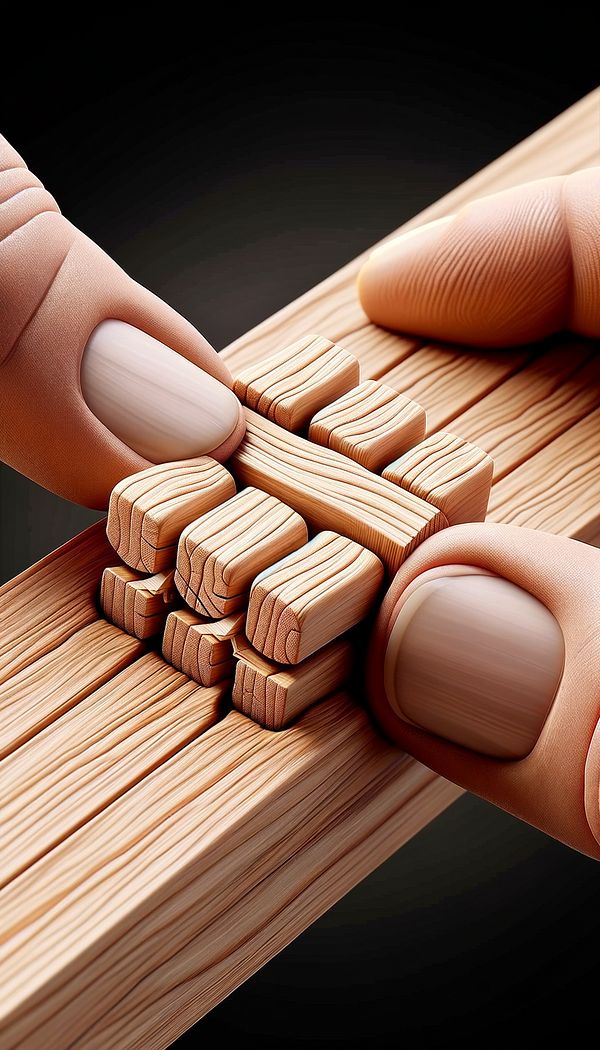What is a Finger Joint?
A finger joint is a woodworking joinery technique used to connect pieces of wood end-to-end.
Description
A finger joint, also known as a comb joint, is a woodworking technique where a set of complementary rectangular cuts are made in two pieces of wood which are then glued together. The interlocking fingers greatly increase the surface area for gluing, making the joint much stronger and more resistant to bending stresses than a simple butt joint. The visual aspect of finger joints can be quite distinctive, often used for both its aesthetic and structural qualities.
Finger joints are most commonly found in pieces of furniture, window frames, wooden boxes, and other items where a strong, durable joint is required. They can be cut by hand, though for precision and efficiency, most modern woodworkers use a router or a special finger joint cutter. A perfect finger joint requires precise cuts, and alignment as any discrepancy can weaken the joint. Finger joints can also be made more decorative by varying the size and shape of the 'fingers.'
As an eco-friendly practice, finger joints are frequently employed to join short pieces of wood together to create a longer piece, reducing waste. This method allows for the utilization of scrap or reclaimed wood, contributing to sustainable woodworking practices.
Usage
In interior design, finger joints are often seen in custom cabinetry, high-quality furniture, and even in architectural elements where wood is a prominent feature. The distinctive look of finger joints adds a touch of craftsmanship and detail to pieces, making them highly valued in design projects that emphasize natural materials and quality construction.
FAQs
-
Are finger joints strong?
Yes, finger joints are considered one of the stronger woodworking joints. The interlocking design increases surface area for gluing, making it resistant to being pulled apart.
-
Can finger joints be used in all types of wood?
Finger joints can be used in most types of wood. However, the wood's hardness and grain pattern can affect how well the joint holds. Softer woods are generally easier to work with when creating finger joints.
-
Is specialized equipment required to make finger joints?
While finger joints can be cut by hand with a saw and chisel, for precision and efficiency, many woodworkers use a router or a specialized finger joint cutter.
Practical Application
To apply finger joints in your projects, ensure accuracy in measurement and cutting to maintain the joint’s strength. Consider the visual aspect of the joint as part of your design, choosing to either highlight its interlocking pattern or to blend it seamlessly with the rest of the piece. Additionally, factor in the wood type and the final use of the joint to determine the best size and pattern for the fingers, tailoring the joint to meet both aesthetic and structural needs.
-
Architectural Elements199 articles
-
Furniture Types599 articles
-
Fabrication & Craftsmanship133 articles
-
Materials & Textiles360 articles
-
Construction & Building86 articles
-
ChinoiserieChinoiserie is a style inspired by Chinese artistic influences.
-
Abrasion WearAbrasion wear refers to the damage or wear that occurs on a surface due to friction.
-
VoluteA volute is a spiral or scroll-like ornamentation.
-
Reclining FurnitureReclining furniture refers to seating options designed with adjustable mechanisms for leaning back and elevating the legs.
-
Kidney DeskA kidney desk is a desk shaped like a kidney, characterized by its curved front and usually a recessed center.
